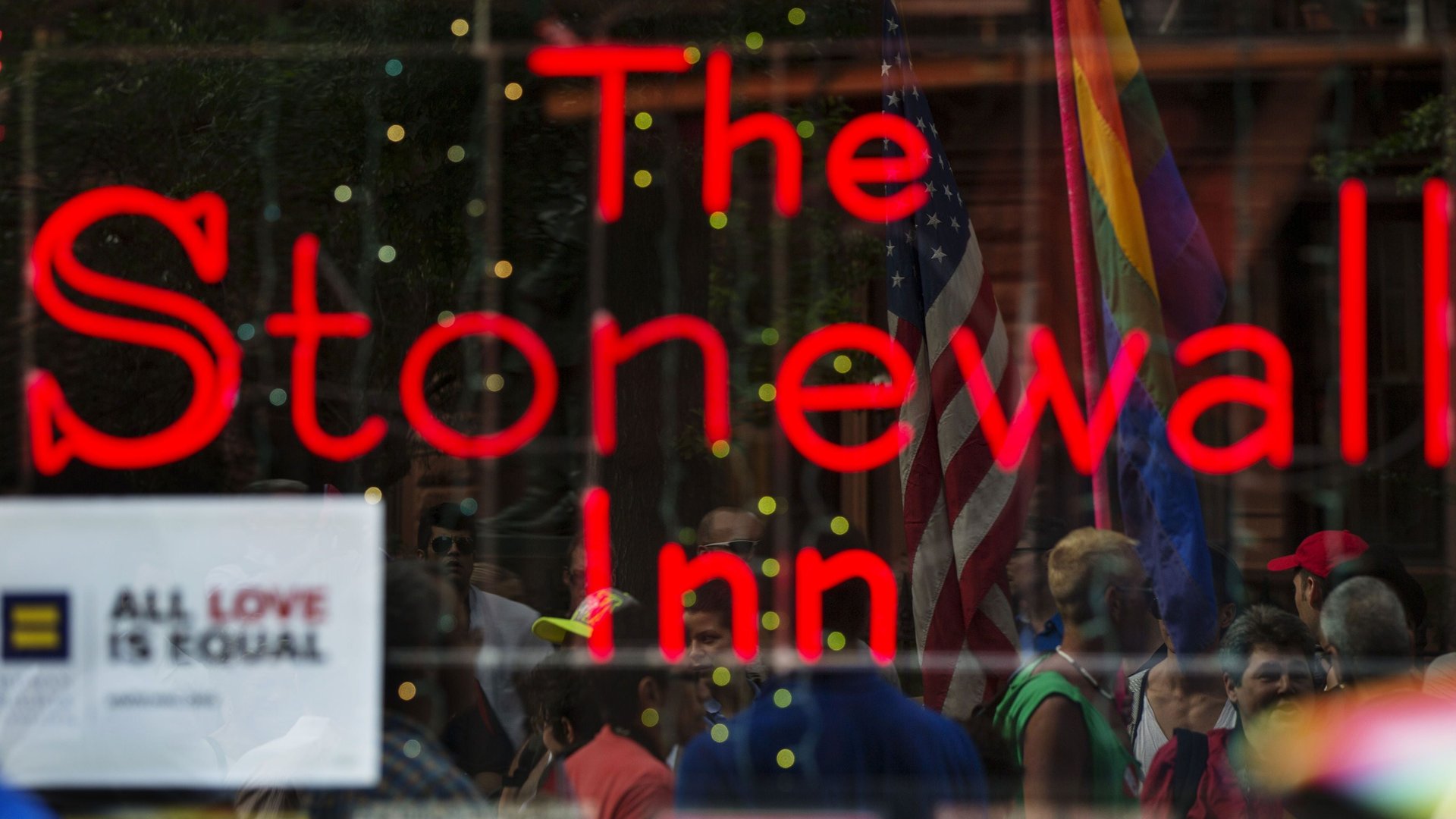This one thing could drastically improve LGBTQ life on college campuses
Duke University now encourages students to answer questions about themselves and their cultural and social affiliations, including their gender identity and sexual orientation, in the form of a short essay. While the number of colleges and universities that have added questions regarding sexual orientation and gender identity to their admissions applications has slowly increased since Elmhurst College first did so in 2011, Duke is the first university to do so in the form of a descriptive, open-ended, essay question.


Duke University now encourages students to answer questions about themselves and their cultural and social affiliations, including their gender identity and sexual orientation, in the form of a short essay. While the number of colleges and universities that have added questions regarding sexual orientation and gender identity to their admissions applications has slowly increased since Elmhurst College first did so in 2011, Duke is the first university to do so in the form of a descriptive, open-ended, essay question.
In many ways this is a positive step; encouraging students to write about themselves acknowledges the complexity and unwieldy nature of identity, and the difficulty faced by anyone who doesn’t fit perfectly into a box. An open-ended question acknowledges the mutable aspects of gender and sexual orientation, allowing space to describe an evolving identity. However, without the addition of questions that specifically articulate a welcoming attitude toward LGBTQ identified students, this approach will do little to specifically encourage LGBTQ and gender non-conforming students to apply.
The failure lies in the question’s vague language: “Duke University seeks a talented, engaged student body that embodies the wide range of human experience; we believe that the diversity of our students makes our community stronger. If you’d like to share a perspective you bring or experiences you’ve had to help us understand you better—perhaps related to a community you belong to, your sexual orientation or gender identity, or your family or cultural background—we encourage you to do so. Real people are reading your application, and we want to do our best to understand and appreciate the real people applying to Duke.”
It’s unclear what the above question is actually asking students to reveal. By sandwiching “sexual orientation or gender identity” between “community” and “cultural background” the question seems to equate transgender experience with joining a club or having hippy parents. Certainly, the way this question is posed does not indicate any sort of awareness of the negative consequences that students may have suffered as a result of the identities they are being encouraged to confess.
The wording of this question indicates that gender identity and sexual orientation are not seen as stable categories that define social and cultural experiences, but it doesn’t explicitly say where these things fall on the scale of “difference.” In other words, this description makes a common neoliberal mistake in equating diversity with the inclusion of anyone not fitting a strict definition of white, middleclass heteronormativity, without distinctly stating which aspects of difference are acceptable and which aren’t.
This approach obfuscates the meaning of diversity and does more work toward soothing members of an admissions committee who wish to understand themselves as open minded, than a transgender student who requires access to gender-neutral bathrooms or a closeted gay or lesbian student hoping to escape a bigoted hometown.
LGBTQ youth commonly face verbal harassment and physical assault in high school. They are more than twice as likely to have attempted suicide as their straight peers, and LGBTQ college students often continue to face harassment on campus. The fact is that the increasing visibility of LGBTQ and gender-nonconforming individuals in the media does not directly translate into improved quality of life for LGBTQ students. While increased visibility may lead to greater tolerance of LGBTQ students by non LGBTQ individuals, it does not mean that greater numbers of LGBTQ students will trust universities to embrace them and their difference, and certainly not in the very form that will lead to their acceptance or rejection from college.
Of course asking students to write about potentially unique aspects of themselves is a great way to encourage nuanced descriptions, not to mention the fact that discrete identity categories are increasingly meaningless as generations of students reject what they see as outdated Stonewall-era classifications like lesbian, gay and bisexual; my students often reject labels, telling me “I just like whoever I like.” Yes, students with this kind of sophisticated read on their sexual orientation and gender identity most likely do not need special accommodations. However, it’s imperative that colleges and universities to reach out to the students who do.
By including simple, optional questions like, “Do you identify with the LGBTQ community?” alongside other important background information such as ethnicity and languages spoken, as well as offering “transgender” and other gender identities in addition to male and female, colleges and universities indicate to LGBTQ students that they are expected and included, and to non-LGBTQ students that sexual and gender diversity are a fact of university life.
Universities must make it exceedingly clear to potential students that the university to which they are applying will not only welcome their particular sexual orientation and gender identity but will make available the necessary resources to ensure they succeed while they are there and once they graduate.